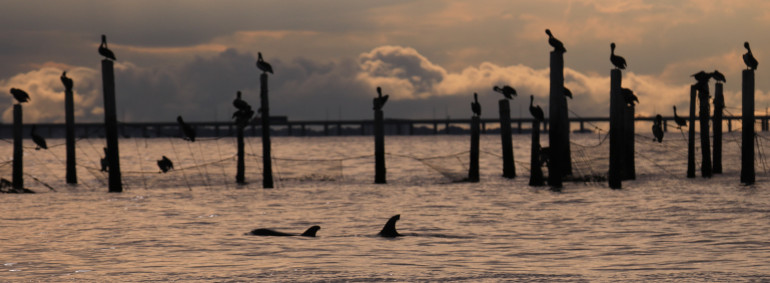Trip 10 - Mid-Atlantic
By this point in the Experiencing Life series, there are not many new topics to explore, but there are a few. We've experienced salt water environments and fresh water environments but we haven't really dealt with places where salt water and fresh water mix. These areas are called estuaries, and they are a focus of trip 10. The other main focus of the trip is on some world-class zoos, museums and an aquarium.
The timing of this trip revolves around two spawning of two types of organisms: Horseshoe Crabs and Sea Turtles. The turtles breed from May to August but the Horseshoe Crabs spawn during the shorter window of May to June. So, really, the best time to start is in May.
The first stop of Trip 10 is the Green Swamp Preserve in Southeastern North Carolina. This site is within the small worldwide range of the Venus Fly Trap plant. There are also representatives of the other types of carnivorous plants such as sundews and pitcher plants, and these plants will be the primary focus. You will see the Longleaf/Slash Pine forest type explored in Trip 2.
The next stop is a short trip to the East to North Carolina's Outer Banks. Kure Beach, and others in the area, are places where the Sea Turtles breed. Ocracoke is an area known for its beach combing where mollusks and other sea life can be experiencined.
The next stop is the focus site for the trip: Chesapeake Bay. The largest estuary in the U.S., we will explore how organisms have adapted to varying levels of salinity. The Chesapeake Bay National Estuarine Research Reserve has four sites along the York River that collect data from more salty to nearly fresh water. We'll also take a look at how human activity has influenced populations of oysters and other organisms in the bay. Other specific sites worth a visit include York River State Park, First Landing State Park at Virginia Beach, Pleasure House Point Natural Area, Calvert Cliffs State Park and more.
Then it's up the Delmarva peninsula to Assateague Island. Here you can experience beach combing for more mollusk shells and crustaceans and see a feral herd of horses.
The beaches of Delaware Bay contain the most specific timing event of the trip. Evenings, at high tide, near the full and new moons of May and early June are the times to experience the spawning of Horseshoe Crabs. Even though the word "crab" is in their name, they are more closely related to spiders. This will provide an opportunity to explore the classification of arthropods in more depth. We will also make ecological connections between the spawning of these organisms and the migration schedules of various birds.
And that concludes the natural sites of the trip. The following sites are ones where the focus will be on animals and fossils we have yet to experience. The first of these is the Smithsonian National Museum of Natural History. Located on the mall of Washington D.C., it is one of the best in the world.
The Smithsonian also runs the National Zoo, on the outskirts of Washington D.C. They are one of the few zoos that have a panda, due to resrictions by China.
Next is the National Aquarium, also known as the Baltimore Aquarium. This is another world-class site for experiencing aquatic organisms.
The American Museum of Natural History in New York is the next site on Trip 10. Started by Theodore Roosevelt's father among others, it has grown into another world-class facility.
Lastly, the trip takes us to the Bronx Zoo, in the burrough just north of Manhattan.
While in New York City, we'll experience the adaptations some organisms have made to dense urban environments.
Timing Events:
- May & June, full and new moons, evening high tides - Horseshoe Crab spawning
- May - August - Sea Turtle breeding
|



